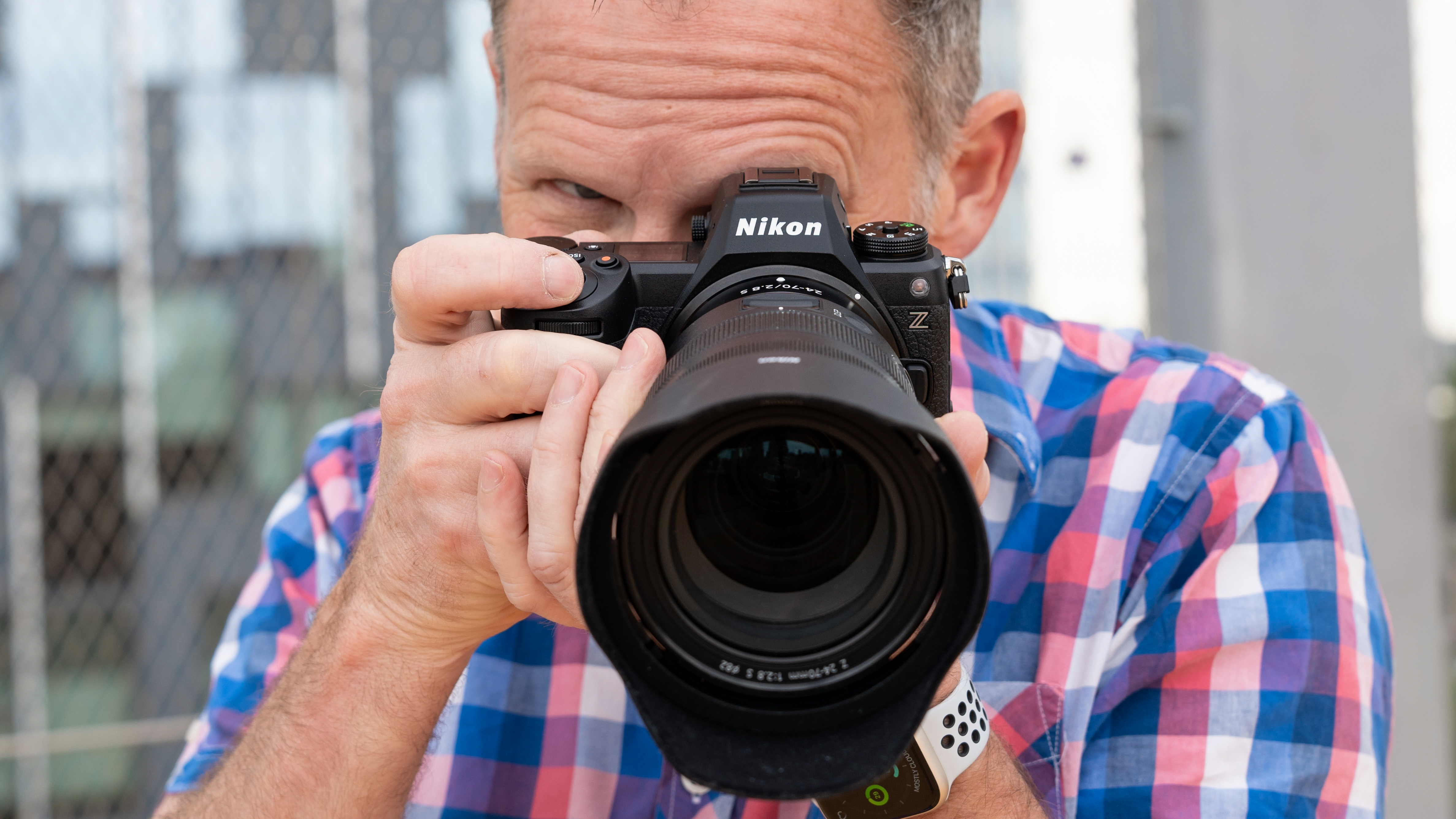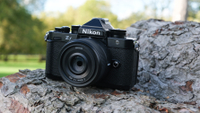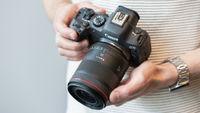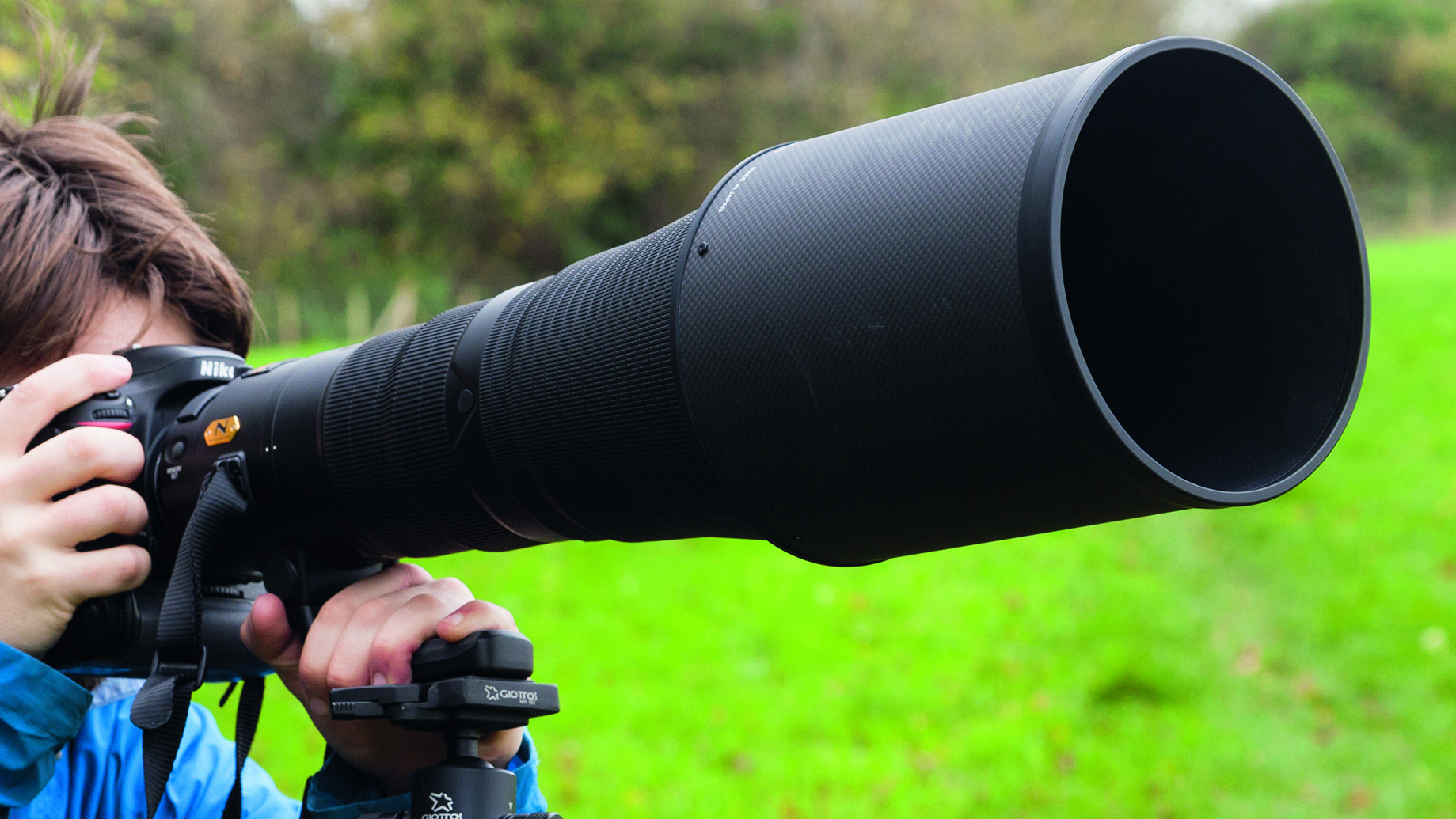Digital Camera World Verdict
You don’t get something for nothing. The Z6 III is by far the most expensive Z6-series camera to date, bumping up the purchase price at launch by about 25 percent, compared with previous models. Is it worth it? I’d say 100% yes, with no reservations. The new ‘partially stacked’ image sensor enables blistering performance, the ultra-high-res HDR wide gamut viewfinder gives an ultra-realistic display, and the new vari-angle screen with its front-facing facility makes the Z6 III much more ideal for vlogging than its predecessors. And for night owl photographers, the autofocus system can practically see in the dark. All in all, this camera is an epic all-rounder.
Pros
- +
Ultra-realistic OLED viewfinder
- +
Fast shutter speeds and drive rates
- +
First Z6 with a vari-angle screen
- +
Excellent autofocus performance
Cons
- -
Pricier than previous Z6 models
- -
Video tops out at 6K
- -
Incompatible with previous battery grip
- -
No standalone battery charger supplied
Why you can trust Digital Camera World
It’s been a long time coming and the rumor mill has been at fever pitch for a year or more, but Nikon has finally unveiled the latest in its Z6 line of ‘enthusiast’ full-frame mirrorless cameras.
With a lower 24.5Mp count than its more upmarket (and expensive) Nikon Z8 and Nikon Z9 pro models, which boast twice the resolution at 45.7Mp. It’s a little bit bigger than its predecessors (the Z6 and Z6 II shared almost identical dimensions), but a fair bit smaller than the bigger-bodied Z8 and Z9. It shares some of the same tech as the similarly enthusiast-level Nikon Zf but ushers in some serious upgrades and has more up-to-date handling characteristics, whereas the Zf has retro styling with plentiful control dials, more akin to a classic Nikon 35mm film camera.
Ultimately, the Z6III aims to be among the best Nikon cameras on the market, as well as taking full advantage of the best Nikon Z-mount lenses.
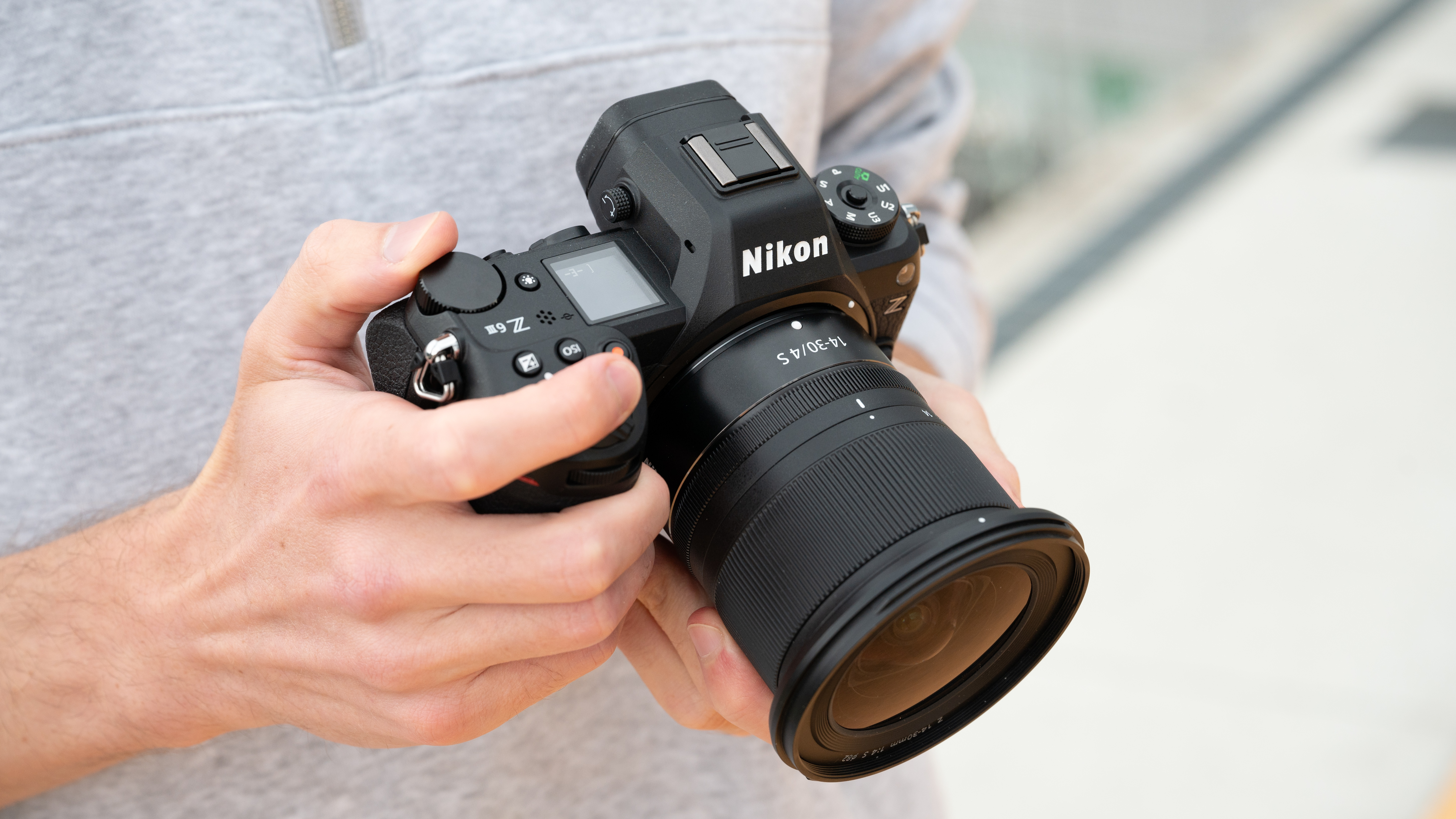
Nikon Z6 III: Specifications
| Lens mount | Nikon Z mount (FX) |
| Sensor | 24.5 MP CMOS |
| ISO | 100 to 64,000 (204,800 expanded) |
| IBIS | 5-Axis, up to 8.0 stops |
| Viewfinder | 0.5-in, approx. 5760k-dot UXGA OLED electronic viewfinder, approx. 0.8x |
| Screen | Approx. 2100 k-dot, Vari-angle TFT touch-sensitive LCD |
| Max focus points | 299 |
| Max shutter | 1/8000 (mechanical), 1/16000 (electronic) |
| Burst speed | 120fps (DX format) |
| Video | 6K60p, 4K oversampled, FHD 240p |
| Video codecs | N-RAW (12 bit), Apple ProRes RAW HQ (12 bit), Apple ProRes 422 HQ (10 bit), H.265/HEVC (8 bit/10 bit), H.264/AVC (8 bit) |
| Memory | CFexpress (Type B), XQD, SD (UHS-II) |
| Battery | EN‑EL15c |
| Dimensions (W x H x D) | Approx. 138.5 x 101.5 x 74 mm ( 5.5 x 4 x 3 in.) |
| Weight | Approx. 760 g ( 1 lb. 10.9 oz. ) |
Nikon Z6 III: Price
As I mentioned at the outset, the Nikon Z6 III is about 25% more expensive to buy than previous Z6-line bodies when they were launched. For comparison, the original Z6 launched in November 2018 at $1,999 / £2099, and was followed by the Nikon Z6 II in December 2020, priced at $1,999 / £1999 / AU$3,299. The Z6 II addressed criticisms of the original model by adding a second SD card slot and dual processors, offering a fast burst rate of 14fps and improved buffer capacity.
The Nikon Z6 III launched in July 2024 at $2,499 / £2,699 / AU$4,499. That might seem like a substantial price hike but I feel the Z6 III is very good value, considering its new tech, which includes the partially stacked image sensor, electronic viewfinder, and uprated image stabilization system. For the sake of comparison, the Z6 III body is similar in cost (identical in the USA) to the launch price of competing models aimed at enthusiast photographers and content creators, including the Canon EOS R6 II at $2,499 / £2,799 / AU$3,799, and the Sony Alpha A7 IV at $2,499 / £2,400 / AU$3,499.
For new adopters rather than upgraders, the new Nikon Z6 III is available in three kit options, as well as a body-only package. The kits offer a modest discount compared to buying the camera and lenses separately. The kit with a Nikon Z 24-70mm f/4 S costs $3,099 / £3,249 / AU$4,999. I love this lens for its superb optical quality throughout the zoom range, and it’s one of the sharpest kit lenses ever made.
If you need additional reach, the Nikon Z 24-120mm f/4 S kit costs £3,539 / AU$5,999, provides an extra 50mm of reach, and covers short-telephoto focal lengths. The Nikon Z 24-200mm f/4-6.3 VR kit is priced at £3,439 / AU$5,799, and although not an S-line lens, this one is noted for its stunning optical quality considering its zoom range and includes built-in VR for super telephoto shots.
Nikon Z6 III: Key Features
I’ll start with what remains the same, as it’s a shorter list. As previously mentioned, the sensor resolution is the same, at 24.5Mp, It has two memory card slots; one CFexpress (backward-compatible with XQD) and one SDXC USH-II. It takes the same EN‑EL15c battery that slots into the protruding grip at the bottom of the camera, and a pair of rubber flaps on the side reveals the mic, headphone, USB-C, and HDMI sockets, plus an ‘Accessory Terminal’ for connecting a remote controller.
Just as the Nikon Zf was no mere ‘reskinned’ Z6 II, the Z6 III takes some tech from the Zf, but also some from the flagship Z8 and Z9, while also adding some new innovations of its own. While the sensor has the same megapixel count as previous models, it’s an all-new ‘partially stacked’ sensor, which enables much faster readout speeds than previous-generation sensors. It’s not as flat-out speedy as the fully stacked sensor in the Z 8 and Z 9 but is nevertheless about 3.5x faster than the readout of Nikon’s previous 24.5MP sensors.
The upshot is that while the camera has a mechanical shutter, you won’t need to use it for most shooting scenarios, and can instead rely solely on the fully electronic shutter. This enables blistering shooting speeds of up to 120 frames per second, although images are limited to using DX crop mode, which is about 10MP in size. Dropping to 60fps enables full FX 24.5MP images. If you do engage the mechanical shutter, then the frame rate drops to a still-impressive 20fps for JPEG images and 14fps for Raw images. Impressively, the Raw buffer depth is cavernous, catering to over 1,000 shots.
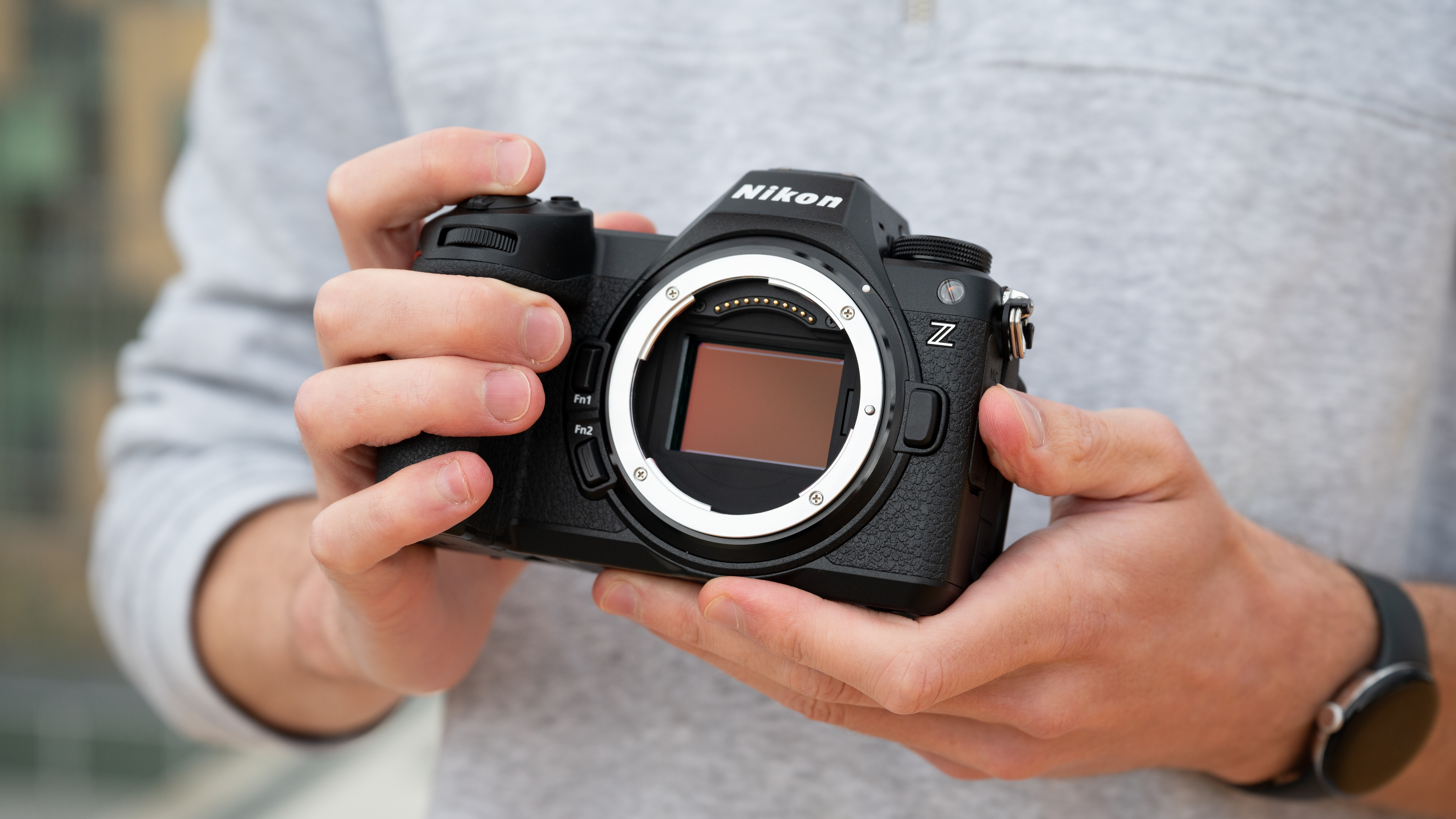
One time you’ll definitely need to use the mechanical shutter is if you’re shooting with flash. That’s because the readout from the image sensor when using the electronic shutter isn’t quite fast enough to accommodate the very brief pulse of light from a flashgun. Even so, it's more than capable of keeping up with the action for sports and wildlife photography, including panning, without exhibiting signs of ‘shutter lag’ that would otherwise cause images to shear. Nikon’s decision to develop a ‘partially’ rather than fully stacked sensor is down to cost; aiming to keep the Z6 line of cameras reasonably affordable.
The sensor is mounted onto an in-body image stabilization (IBIS) device that offers up to eight stops of stabilization, up from five stops with the Z6 II. Following the ‘one over’ rule that says you should shoot at a shutter speed of the reciprocal of the focal length (1/200 sec at 200mm), you would theoretically be able to get sharp shots on the same 200mm focal length with shutter speeds as slow as 1 sec – provided your subject is static, of course.
What’s more, the IBIS is designed to pivot around the active focus point, rather than arbitrarily shifting the sensor. This gives even greater finesse in keeping the intended subject sharp, rather than basing stabilization on the whole image frame. It’s the same system that debuted in the Zf, and like that camera, can be used for a trick ‘sensor-shift shooting’ mode, where the sensor is shifted by tiny amounts and a series of images are taken, which can then be merged in Nikon’s NX Studio software for super-detailed high-resolution shots equivalent to 96 megapixels. Both the subject and camera have to be perfectly still for this to work, so you’ll need to use a tripod.
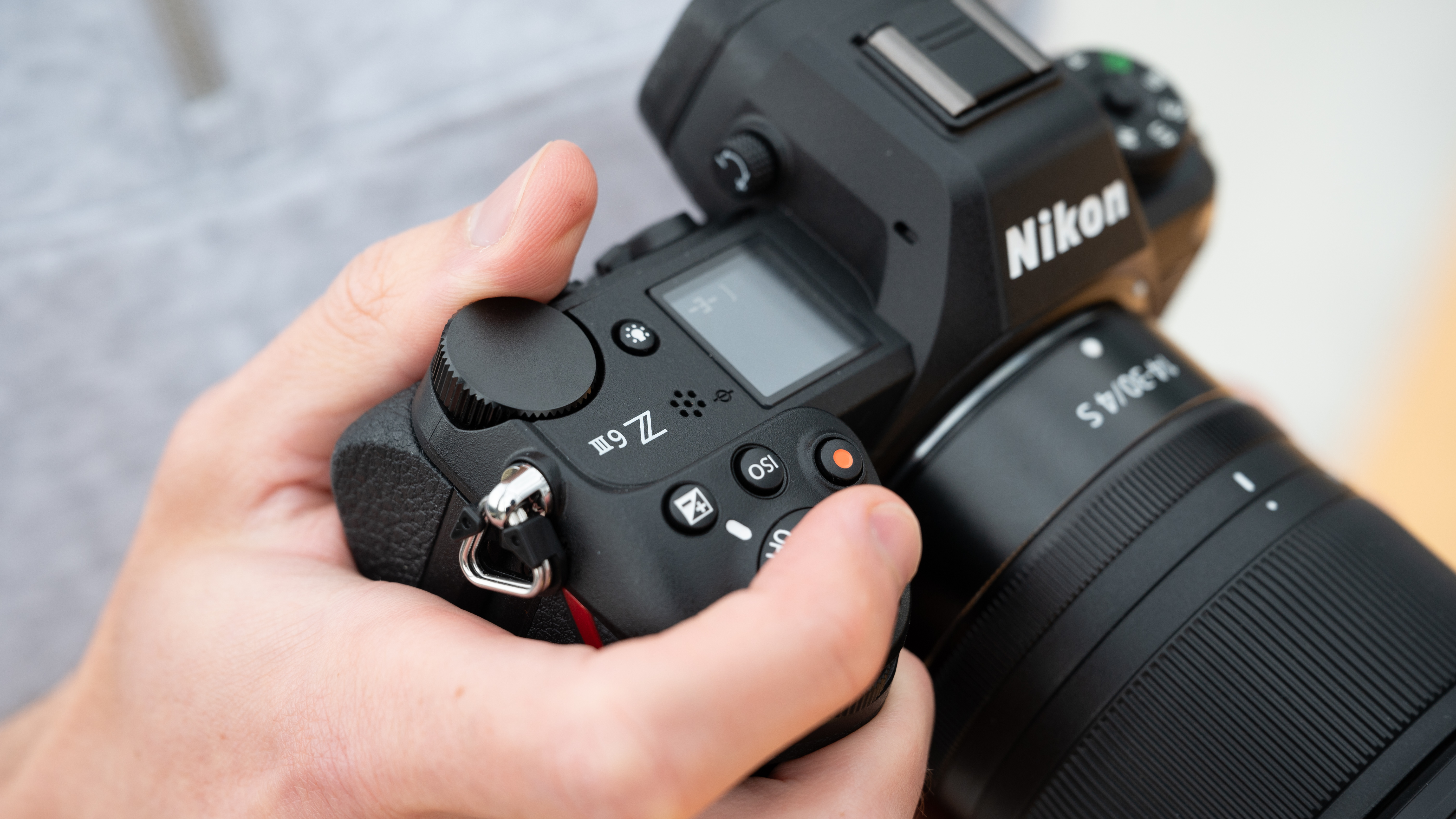
As with other Z-system cameras, the autofocus points are spread across the length and breadth of the imaging sensor, giving edge-to-edge autofocus no matter where in the frame your subject is. This time around it has 299 AF points spread across the entire sensor, like the Zf, and it’s not an insignificant increase over the 273 points of previous Z6-line cameras.
Autofocus works right down to an exposure value of -10EV, which effectively means the camera can focus on subjects when lighting conditions are too dark for the naked eye to see clearly. That can be a major bonus for night photographers, as well as potentially making autofocus possible for astrophotographers.
The camera is powered by the latest generation of EXPEED 7 image processor, as used in the Z8, Z9, and Zf. That’s a major step forward from the EXPEED 6 processor used in the Z6, while the Z6 II featured a pair of EXPEED 6 chips. Nikon says that this processing grunt enables powerful autofocus performance that matches that of the Z8 and Z9, and there’s a raft of subject detection modes for people, animals, and vehicles.
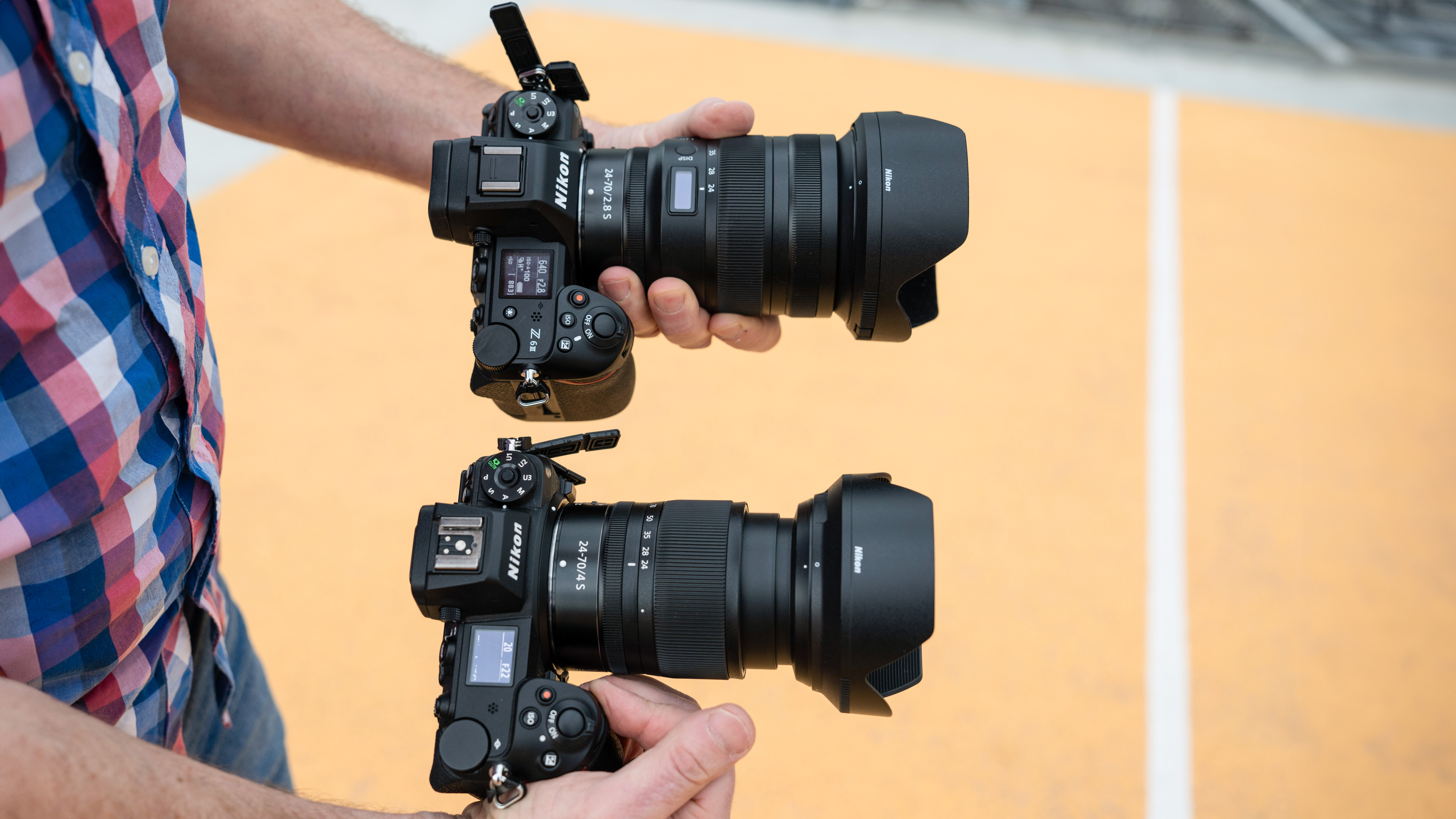
The vari-angle touchscreen rear LCD has a resolution of 2.1Mp, and unlike the tilt-only design for shooting high or low of the previous Z6-line cameras, this time around it’s a full vari-angle screen that flips out to the side and can be rotated 180 degrees up and down for front-facing selfies or reversed so the screen is tucked away for protection when shooting with the viewfinder. When shooting in a vertical orientation, the information overlay automatically rotates too, as first debuted in the Z9. Some may still prefer the relatively quick and easy operation of a tilt screen, as featured on previous Z6-line cameras, but the front-facing facility of the vari-angle screen makes the Z6 III much more useful for vlogging as well as for taking selfies.
As in other Z-series cameras, the information in the electronic viewfinder (EVF) is mirrored from the rear LCD and reflects the exposure settings dialed in, as well as the ability to overlay vital information such as a histogram, in-camera level, and grid display.
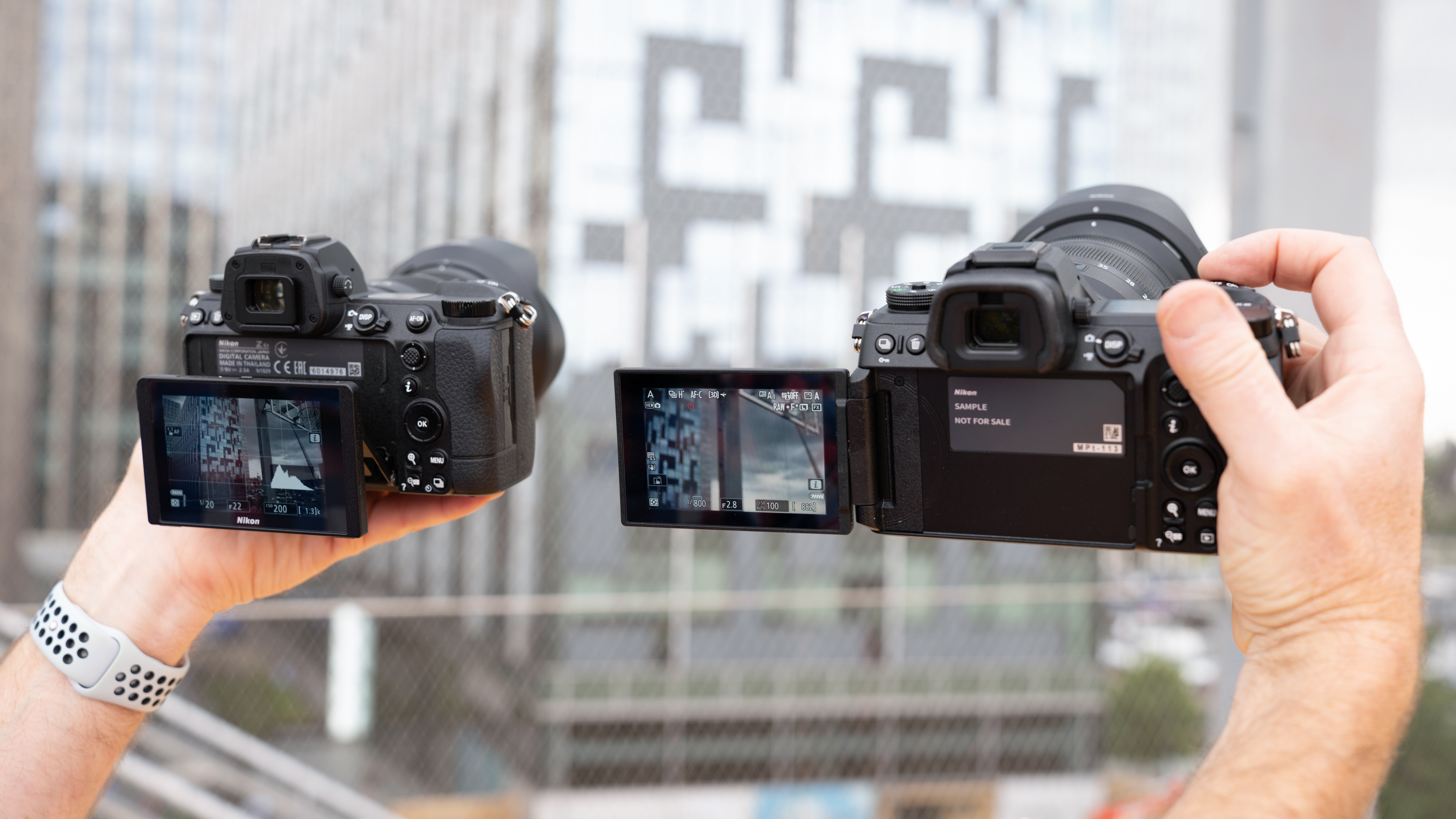
The electronic viewfinder of the Z6 III is something of a masterpiece in its own right. It’s the brightest and highest-resolution EVF that Nikon has ever made. While previous Z-system cameras’ EVFs top out at 3.69 million dots, this one has seen a significant increase in the pixel count to 5.76Mp. The EVF refresh rate is a super-smooth 60fps, to a realistic-looking display, and it’s incredibly bright, measured at 4000 nits, which auto-adjusts according to the ambient light.
This increased brightness will be particularly beneficial for sports and wildlife photographers who’ve perfected the ability to shoot with one eye looking through the viewfinder, while the other looks for the subject itself in the real world, providing a more natural balance when shooting in bright light.
The EVF also has a DCI-P3 color gamut, for a wider range of more lifelike colors than previously, and of course, it’s fronted by Nikkor glass, to ensure the projected image is crisp and sharp right to the corners of the display.

Nikon Z6 III: Design & Handling
When it comes to the physical build of the camera, it’s very much evolution rather than revolution, with the near-identical button layout, aside from the aforementioned Playback and Release Mode button swap. It took a little getting used to, coming from a previous-generation Z6, but it makes sense as you may well wish to change from Continuous to Single Shot shooting mid-shoot, and the button placement makes it easier to do this without taking your eye off the viewfinder.
Our main grumble with the Z 6/7 line was the lack of direct access buttons for oft-used features, the most obvious of which is the ability to change the focus mode between Single (AF-S), Continuous Drive (AF-C), and Manual focus (MF), although this is set to one of the pair of programmable Function buttons at the front of the camera. However, while these Function buttons are user definable, we reckon most will leave them to the defaults as they are set to such vital functions.

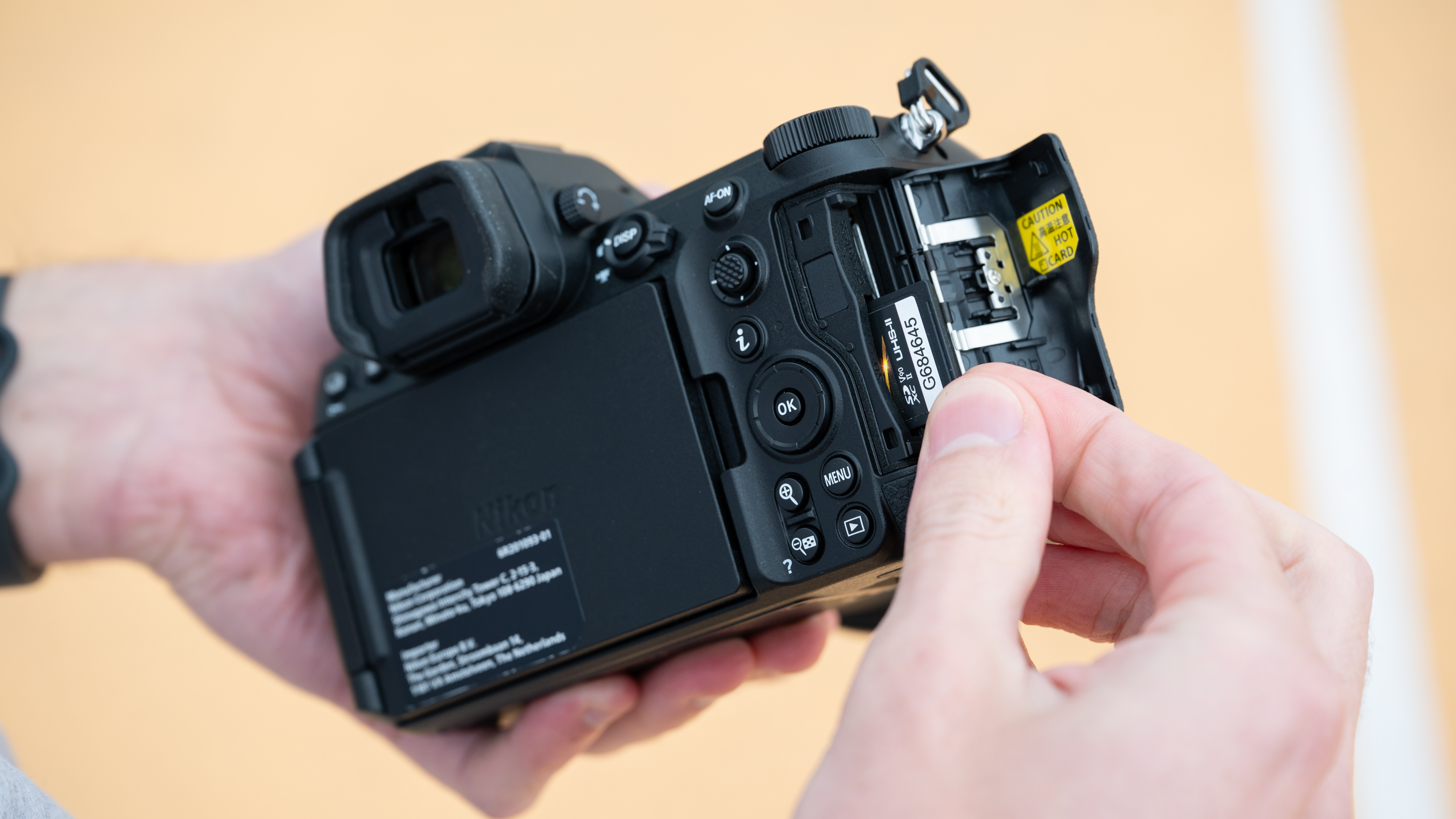
That said, a jab of the ‘i’ button does bring up a quick menu of commonly used settings, which becomes second nature to access, but more advanced functions, such as bracketing (which has its own dedicated button on the Z 8/9 and DSLRs like the D850) require delving into the menu system.
The top-plate LCD illumination button is a welcome addition, enabling you to see your settings when shooting in dark environments as the OLED display isn’t particularly bright.
While it looks pretty similar to the previous Z6 line, side-by-side the difference is more obvious, and it’s a fraction bigger and heavier. The differences may be slight, but one upshot is that owners of the previous model’s battery grip will have to invest in the new MB-N14, which is purpose-built for the Z6 III. That can be a real pain if you’ve already swapped from the original battery grip for the Z6 after upgrading to the Z6 II – it’s a different grip for all three cameras. Likewise, custom-fit third-party accessories such as L-brackets are likely to require reinvesting in if you’re upgrading from the previous model.

Nikon Z6 III: Performance
I was thoroughly impressed with the performance of the Z6 III before even fully pressing the shutter button to take my first shot. Just putting my eye on the viewfinder gave me an instant wow factor. The new OLED viewfinder combines high dynamic range with an enhanced color gamut, as well as ultra-high-resolution, and with none of the dreaded lag for which electronic viewfinders have often been notorious. The outcome is an incredibly lifelike display that rivals an optical viewfinder but with the additional attraction of a live preview for parameters including exposure value, white balance, and alternative picture control settings like portrait, vivid, and landscape. In essence, ‘what you see is what you get’!

Next up, there’s the autofocus system. For quite a while now, Canon has been shouting loudly about its much-vaunted ‘deep-learned AI’ autofocus technology in recent EOS R-system cameras. I’ve found that the latest generation of subject-tracking autofocus in Nikon Z-system cameras is every bit as good, arguably even better. Our team initially tried out the Z6 III on a rooftop basketball court in North Greenwich, within striking distance of the O2 Arena. The camera tracked the fast-moving players with unerring accuracy, consistently picking out human forms and latching onto them. Selecting the Person subject recognition mode and setting the wide-area focus mode, the camera unwaveringly locked onto the basketballer's faces and eyes as they battled one-on-one, shooting hoops. It certainly felt like a more reliable performance than when using previous Z6-line cameras, and akin to the Z8 levels of speed and accuracy.

I found animal-recognition autofocus similarly superb, seeking out a pet cat in a range of indoor and outdoor environments and switching to the animal's head and then eyes even at fairly lengthy distances. I had the same positive experience with birds and other animals. In most cases, I was able to set the autofocus subject recognition system to ‘automatic’, with the confidence that it would pick out my intended subject matter. I’ve become used to recent Nikon Z-system cameras finding vehicles like cars, motorcycles, trains, planes, and bicycles, but the Z6 III even picked out a distant lawnmower in one of my test shots.
The camera feels entirely natural in the hand, with the bulbous grip that houses the battery feeling comfortable to hold while offering a firm grip.

In normal use, the camera defaults to using the electronic first curtain shutter or mechanical shutter, depending on shutter speed. In fully electronic shutter mode, you might initially miss the physical and audible feedback from the mechanical shutter operating. It can be disconcerting at first, with only the briefest of flashes indicating that a shot has been taken, particularly when set to the higher 120fps or 60fps frame rates. There’s good news, however, in that these super-fast frame rates come complete with continuous autofocus and exposure metering. Of course, you can set an electronic sound to provide further feedback.
Naturally, the bottom line in terms of performance is image quality. The superb sharpness, clarity, and all-round optical performance of Nikon’s Z-mount lenses has always been a big draw to the Z-system for me, and the Z 6III makes the very most of these lenses. Sure, the 24.5-megapixel Z6 III doesn’t tax the resolving power of lenses as much as the 45.7-megapixel Z8 and Z9, but pixel-peeping reveals excellent levels of fine detail and texture. In our lab tests, the Z 6III scored higher than the Z 6II for resolution, in the ISO 100-6400 section of the sensitivity range, matching it at higher ISO settings.
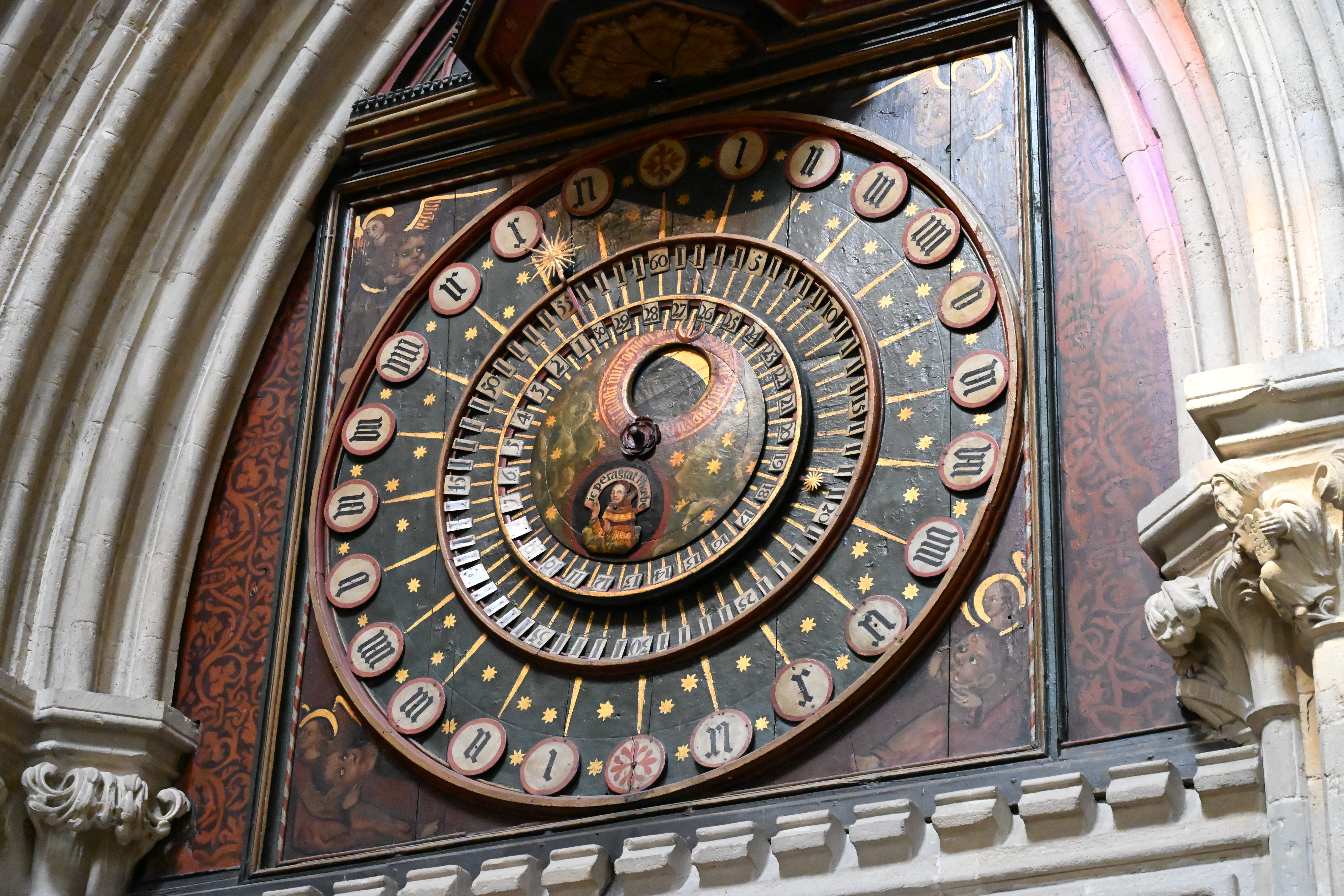
There’s been talk in some quarters that the speed of the partially stacked image sensor comes at the expense of a drop in dynamic range. I found that dynamic range was actually very good in my tests, drawing level with that of the Zf at all ISO settings. Our lab tests for dynamic range returned very similar results to the Zf and Z6 II and were actually slightly better than for the Z9. In practical terms, I found I was able to push the exposure compensation of Raw files in Nikon NX Studio by a full +5 EV stops and get very good detail in near-black shadows with fairly little noise. The Z6 III certainly compares favorably with the Z6 II in this respect, as well as with similar Canon and Sony cameras.
Our lab results for raw signal-to-noise weren’t quite as good as from the Z 6II at high ISO settings but, again, very similar to the Zf. In real-world shooting, I found that the Z 6III delivered really clean image quality even at super-high ISO settings, with impressive retention of fine detail and texture.

Color quality is up to Nikon’s usual high standards. There’s a wealth of picture control options to choose from, which you can tweak to your own preferences. I’ve always been a fan of Nikon’s Active D-Lighting which, in the Z6 III, gives the typical advantage of reigning in very bright highlights and boosting detail in very dark shadows, for a more balanced overall exposure. My only slight complaint with Z-system cameras in general, and inherited by the Z6 III, is I feel that all of the many and varied options for Auto white balance can sap a little of the warmth from very sunny scenes, compared with switching to the Daylight white balance setting. Many would argue, however, that the results are simply ‘accurate’ and that there’s plenty of latitude for making adjustments to Raw files anyway.

When it comes to battery life, the Z6 III is par for the course as a mirrorless camera. Depending on how much you use the viewfinder and rear screen, you can expect about 360 to 390 shots from a fully charged EN-EL15c battery. I’m a bit frustrated that Nikon (among other manufacturers) no longer supplies a standalone charger with its cameras, instead relying on in-camera charging. Even so, quick USB-C charging is supported and separate chargers aren’t expensive to buy. A bonus is that the Z6 III is backward compatible with older EN-EL15a and EN-EL15b Nikon batteries, which have a slightly lower capacity. Only the ‘b’ and ‘c’ versions of the battery can be charged in-camera.




Nikon Z6 III autofocus tracking in action as a basketball player runs directly on to the camera.

Nikon Z6 III autofocus tracking in action as a basketball player runs directly on to the camera.

Nikon Z6 III autofocus tracking in action as a basketball player runs directly on to the camera.
Nikon Z6 III: Video
Video capture tops out at 6K/60p rather than 8K, but I suspect that’s more than enough for most videographers and content creators. On the plus side, 4K UHD/60p footage from oversampled 6K footage is very crisp, and, thanks again to the fast readouts of the partially stacked image sensor, there’s negligible rolling shutter effect. Reign in the resolution to Full HD and 240p is available for 10x slow-motion video capture. Further options include shooting 10-bit log files for maximizing dynamic range and enabling precise color grading in post. Video compression options include N-RAW (12 bit), Apple ProRes RAW HQ (12 bit), Apple ProRes 422 HQ (10 bit), H.265/HEVC (8 bit/10 bit), and H.264/AVC (8 bit).
Nikon Z6 III: Lab Results
For our lab data comparison, we pitched the Z6 III against its main full-frame rivals from Canon, Panasonic and Sony: the Canon EOS R6 Mark II, Panasonic S5 II, and the Sony Alpha A7 IV.
Resolution (line widths/picture height):
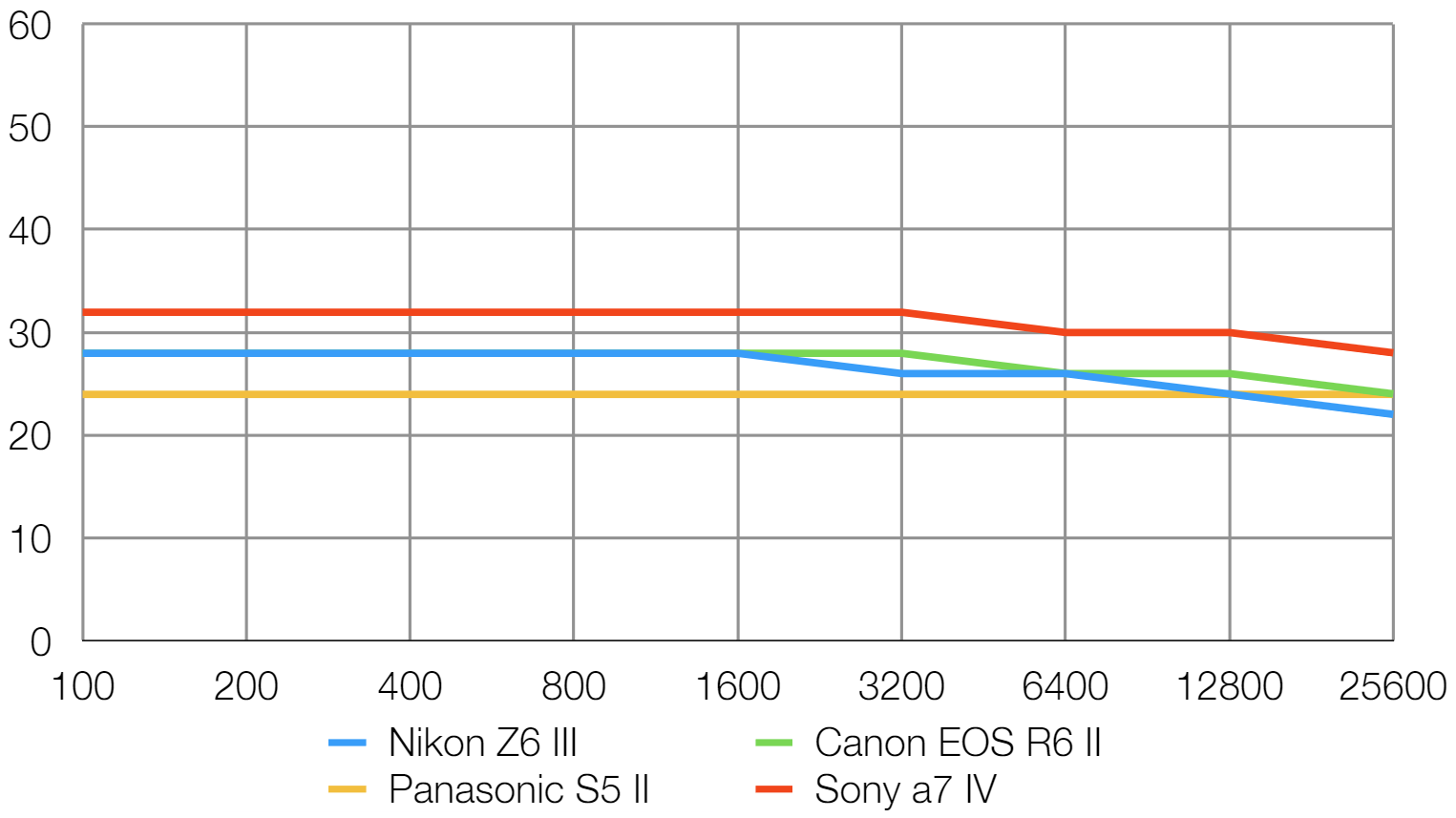
Resolution is measured using standardized text charts which give results in line widths / picture height, which is independent of sensor size.
Based on image sensors with practically identical megapixel counts, resolution throughout most of the ISO range is virtually the same for the Nikon and Canon cameras. Inevitably with its higher 33MP resolution, the Sony a7 IV comes out on top in this test.
Dynamic range (EV):

Dynamic range is a measure of a camera's ability to record extreme brightness ranges and still retain detail in the brightest and darkest parts of the scene. It's measured in EV (exposure values, or 'stops').
There’s very little to choose from between the Z6 III and Panasonic S5 II here - both cameras capture excellent dynamic range throughout our tested sensitivity range. The Canon and Sony cameras don’t fare quite so well.
Signal to noise ratio (decibels):
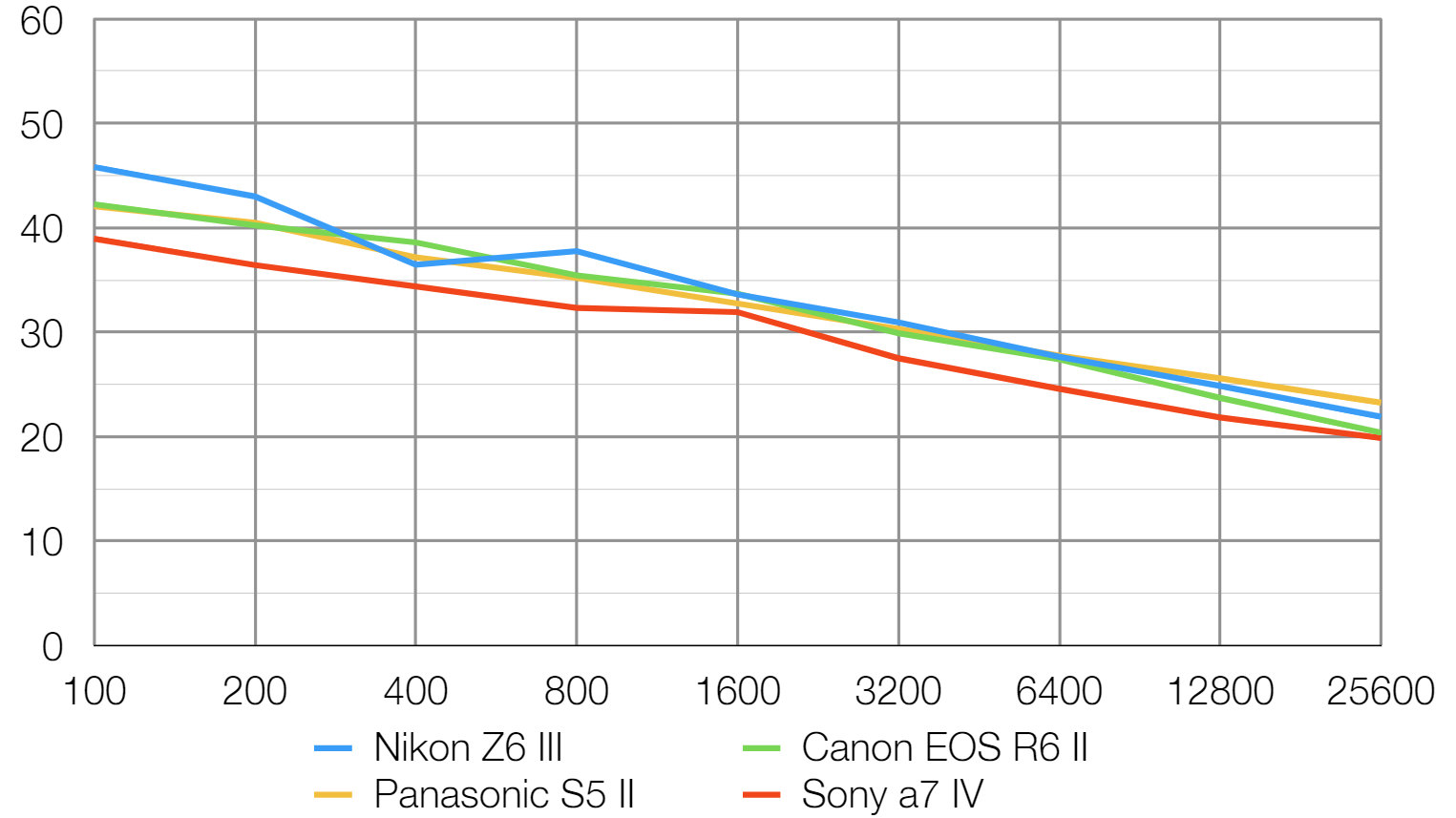
This test compares the amount of random noise generated by the camera at different ISO settings as a proportion of the actual image information (the 'signal'). Higher values are better and we expect to see the signal to ratio fall as the ISO is increased.
The Z6 III and the competition from Canon and Panasonic are very evenly matched when it comes to image noise levels, especially at higher sensitives where noise is most apparent. The higher-resolution Sony holds its own but isn’t quite as impressive.
Nikon Z6 III: Verdict
My first reaction to the Nikon Z6 III was that it’s a bit pricey compared with previous Z6-line cameras. Now that I’ve got to know it, it actually seems very good value for money. Headline attractions include a new ‘partially stacked’ image sensor that enables super-fast readouts, equating to mighty shutter speeds and continuous drive rates, along with stellar video performance. The OLED viewfinder with its ultra-high-resolution, high dynamic range and extended gamut is the best electronic viewfinder I’ve ever used, rivaling the clarity of an optical viewfinder in giving an incredibly realistic display. It’s a stunning camera for shooting stills, and the new vari-angle screen with its front-facing facility makes the Z6 III equally adept for vlogging and other videography. The speed, accuracy and consistency of the autofocus system with its subject recognition and tracking abilities is superb, even in near-darkness, and the bottom line is that image quality simply stellar.
| Features | Key features include the speedy new partially stacked image sensor and suped-up OLED viewfinder. | ★★★★★ |
| Design | It has a mostly tried and trusted Z6-line design but the new vari-angle rear screen is a bonus for vloggers. | ★★★★★ |
| Performance | The subject recognition autofocus, IBIS and metering systems work flawlessly and quality is superb for both stills and video. | ★★★★★ |
| Value | It’s more expensive than previous Z6-line cameras but the upgrades make it well worth the price. | ★★★★☆ |
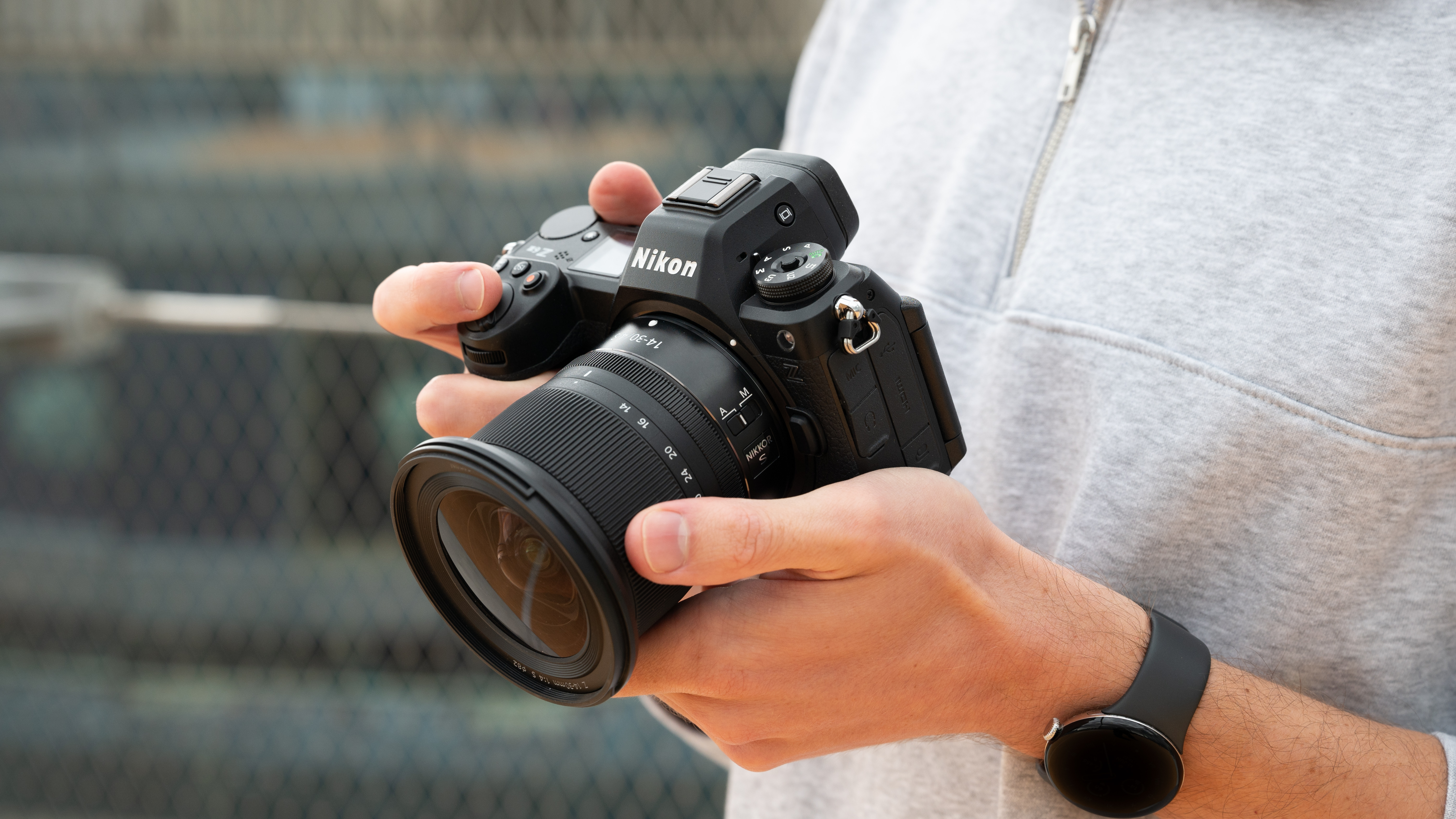
✅ Buy it...
- You want the super-fast shutter speed and burst rate enabled by Nikon’s new partially stacked image sensor.
- You want a camera that works equally well for stills and video, with the bonus of a vari-angle screen for vlogging.
🚫 Don't buy it...
- You prefer the retro styling and hands-on control dials of a yesteryear camera, in which case the Nikon Zf will be a better fit.
- You’d rather have a camera with more megapixels under the bonnet and a more fully pro-grade build, where the Nikon Z8 comes to the fore.
Alternatives
The Nikon Zf has the same megapixel count and vari-angle rear screen as the Z6 III but lacks the partially stacked image sensor. With a design based on Nikon’s classic FM2 film camera, it’s arguably the best ‘retro’ option on the market.
The Canon EOS R6 Mark II is similarly adept as a ‘hybrid’ camera for shooting both stills and video, offering up to a 40fps drive rate for stills and 6K oversampled video, along with similarly advanced subject-recognition autofocus.
Matthew Richards is a photographer and journalist who has spent years using and reviewing all manner of photo gear. He is Digital Camera World's principal lens reviewer – and has tested more primes and zooms than most people have had hot dinners!
His expertise with equipment doesn’t end there, though. He is also an encyclopedia when it comes to all manner of cameras, camera holsters and bags, flashguns, tripods and heads, printers, papers and inks, and just about anything imaging-related.
In an earlier life he was a broadcast engineer at the BBC, as well as a former editor of PC Guide.

